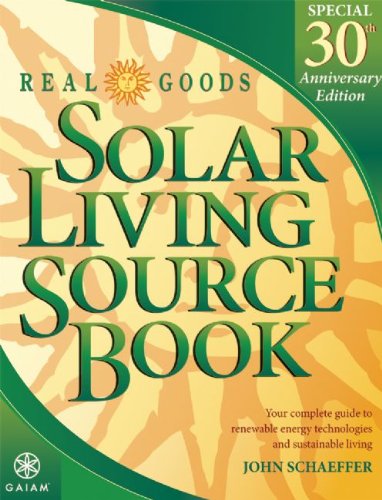In this step-by-step guide, we will provide you with all the information you need to install a residential wind turbine and harness clean energy for your home. As concerns over climate change and the need to reduce our carbon footprint grow, sustainable energy sources like wind power are becoming increasingly popular.
The purpose of this guide is to help you contribute to a more sustainable future by installing your own wind turbine. By generating renewable energy, you can reduce your reliance on fossil fuels and lower your electricity bills. We will break the installation process into easy-to-follow steps and provide helpful tips and precautions along the way.
From selecting the right turbine and assessing your site’s suitability to acquiring the necessary permits and connecting your turbine to your home’s electrical system, this guide covers all the essential steps. We will also discuss maintenance and safety considerations to ensure your wind turbine operates efficiently and safely.
By following this step-by-step guide, you can take a proactive step towards a cleaner and greener future. Let’s get started!
Top Renewable Energy Books
Assess your location
To determine if your location is suitable for installing a residential wind turbine, there are several factors to consider. Firstly, assess the average wind speed in your area, as you’ll need sustained winds of at least 9-14 mph (14-23 km/h) to generate enough electricity. You can find historical wind data for your location from websites like the National Renewable Energy Laboratory. Secondly, research local regulations and restrictions to ensure that installing a wind turbine is permitted in your area. Lastly, evaluate the available space on your property to accommodate the necessary tower height and rotor diameter, keeping in mind that the turbine should be positioned away from obstructions such as trees, buildings, or nearby structures that could impede the wind flow.
Choose the right turbine
Researching and selecting a residential wind turbine that is suitable for your energy needs and location involves considering several factors. First, determine the appropriate turbine size based on the available space and wind conditions in your area. Next, evaluate the power output of various models to ensure it meets your energy requirements. Lastly, look into the reputation and track record of different manufacturers to ensure you choose a reliable and reputable product. By carefully considering these factors, you can select the right turbine for your residential energy needs.
Obtain necessary permits
To obtain necessary permits for installing a residential wind turbine, start by contacting your local authorities. Reach out to them to determine the specific permits required for your project. Once you have this information, follow the necessary procedures to obtain the permits. This may include submitting applications, providing documentation, and paying applicable fees. Make sure to adhere to any guidelines or regulations set by the authorities to ensure a smooth permit acquisition process.
Prepare the site
To prepare the site for the installation of a wind turbine, clear the area of any obstacles such as trees or buildings that may interfere with the turbine’s operation. Ensure that the foundation is stable and sturdy, following the manufacturer’s instructions for site preparation. This may involve leveling the ground and removing any loose debris.
Install the tower
To assemble and erect the tower, first carefully follow the manufacturer’s instructions. Start by inspecting all the components to ensure they are in good condition. Begin assembling the tower by attaching the sections together as specified. Once fully assembled, position the tower in the desired location and securely anchor it to the ground using the recommended method, such as concrete footings or guy wires. This is crucial to ensure the tower can withstand wind loads and remain stable.
Install the turbine
To attach the turbine to the top of the tower, follow the manufacturer’s instructions precisely. Begin by ensuring that all connections are secure and properly aligned. Use the provided tools and fasteners to attach the turbine securely in place. Double-check the alignment to ensure optimal performance and safety.
Connect the electrical system
To connect the turbine’s electrical system to your home’s electrical system, follow these steps:
- Install an inverter: Choose an appropriate inverter based on the voltage and power requirements of your turbine. Mount the inverter in a suitable location near your turbine.
- Connect the inverter: Connect the DC output terminals of the turbine to the input terminals of the inverter using appropriate electrical cables. Ensure the connections are secure and insulated.
- Connect to the main electrical panel: Identify the main electrical panel in your home. Locate a suitable breaker slot and turn off the power to that circuit. Connect the AC output terminals of the inverter to the breaker slot using an appropriate electrical cable.
- Test the connection: Before restoring power, double-check all connections and ensure they are tight. Turn on the circuit breaker for the inverter, and then restore power to the main electrical panel. Monitor the system and ensure it is operating properly.
By following these steps, you can successfully connect the turbine’s electrical system to your home’s electrical system and start utilizing the power generated by the turbine.
Test and commission the system
To ensure that all components are properly connected and functioning, follow these steps:
- Connect all necessary cables and wires to the respective components. Double-check the connections to ensure they are secure.
- Power on the system and check if all the components are receiving power. Verify that the lights, indicators, or displays on each component are functioning correctly.
- Check the communication between the components by sending a test command or signal to each one. Make sure they respond accordingly and that all communication channels are working.
- Test the system under varying wind conditions to verify its performance. Gradually increase the wind speed and observe how the system responds. Ensure that the components adjust and operate as intended.
- Repeat the test for different wind directions to ensure the system is able to handle different scenarios.Remember to document any observations or issues encountered during the testing process for future reference.
Monitor and maintain
Monitor the wind turbine’s performance regularly by collecting and analyzing data on its output and operational parameters. Address any maintenance needs promptly to ensure optimal performance. Follow the manufacturer’s recommendations for maintenance and safety procedures, including regular inspections, lubrication, and component replacements. This will help extend the lifespan of the turbine and maximize its efficiency.
Key Takeaways
In conclusion, we have discussed the key steps involved in installing a residential wind turbine for clean energy. It is crucial to begin with a thorough location assessment to ensure optimal wind conditions. Additionally, selecting the right turbine based on energy needs and budget is essential. Finally, following the manufacturer’s instructions for installation and maintenance is crucial for the longevity and efficiency of the system. By carefully considering these factors and taking the necessary precautions, individuals can successfully install a residential wind turbine and contribute to a cleaner and more sustainable future.
Tools & Materials
Efficient Installation Steps
Benefits of Utilizing Sustainable Energy Sources
- Understand the concept of sustainable energy: Begin by familiarizing yourself with the concept of sustainable energy, which refers to energy sources that can be continuously replenished and do not cause harm to the environment. This includes energy derived from sources such as sunlight, wind, water, geothermal heat, and biomass
- Conduct a energy usage assessment: Start by assessing how you currently use energy in your daily life. Identify areas where you could potentially reduce energy consumption and explore alternative energy sources for those needs. This could include switching to energy-efficient appliances, using natural lighting, or investing in insulation to reduce the need for heating or cooling
- Research renewable energy options: Explore the different renewable energy options available to you. Solar power is one of the most popular and accessible options, and you can consider installing solar panels on your roof. Wind turbines are another viable option, especially in areas with consistent wind patterns. Additionally, you can look into joining a community solar project or purchasing renewable energy from your utility company
- Implement energy-saving practices: In addition to adopting renewable energy sources, it is important to make energy-saving practices a part of your daily routine. These can include simple actions like turning off lights when not in use, using power strips to easily manage electronics, optimizing thermostat settings, and reducing water consumption. These practices can significantly contribute to energy conservation
- Support policies and initiatives for sustainable energy: Stay informed about policies and initiatives that support sustainable energy practices. Support renewable energy policies, advocate for clean energy at the local and national levels, and encourage others to adopt sustainable energy sources as well. Active participation in the energy transition is crucial to accelerating the shift towards a more sustainable future

















